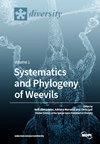大中部地区——南非东部夏季降雨地区植物区系特有的中高海拔中心
IF 2.1
3区 生物学
Q2 BIODIVERSITY CONSERVATION
引用次数: 0
摘要
迄今为止,南非夸祖鲁-纳塔尔省(KZN)的中部地区是基于推测的植物区系特有(CFE)的假定中心。本研究的目的是通过在保护框架内描绘该CFE的明确边界并记录特有的精子植物,从而对这一概念进行实证探索。大中部地区植物区系中心(GMCFE)是一个比KZN中部地区更广泛的研究区域,被正式描述为南部非洲的第20个CFE。它是一个中高海拔地区,占据了KZN的中部地区,连续的草原向北延伸到姆普马兰加省南部,向南延伸到东开普省东北部。这一“山麓”CFE覆盖了约77,000平方公里,主要是mesic C4草地,海拔高度从约700-2200米不等。它与“亚悬崖生态区”一致,基本上是由亚悬崖草地和稀树草原生物区以及姆普马兰加南部和KZN北部的亚悬崖草地组成的。GMCFE拥有至少220种特有的精子植物,其中近五分之一属于夹带科。菊科、藤科、豆科和鸢尾科也有显著贡献。鸡翅属、芦荟属、Dierama属、Kniphofia属、蜡菊属和Streptocarpus属贡献了最多的地方性植物。其中一半以上是牧草,近四分之三局限于草原生物群。地方性辐射归因于地质多样性和地质复杂性(特别是白云岩的强烈岩性影响);地理异质性(特别是高程梯度和多变的地形单位);战略上接近高度多样化的温带和亚热带“边缘植物区系”;以及由传粉媒介驱动的局部适应性辐射。令人担忧的是,受威胁的植物类群数量众多,约60%的特有植物被列入威胁类别(CE、E和VU)或被认为是“稀有”。正规保护水平极低,生态连通性差,加上土地改造和集约利用水平高,使GMCFE成为南非最危险的CFE之一。需要采取紧急保护行动来保护这种独特的、受到高度威胁的“牧场植物群”,并阻止困扰该地区的生物多样性危机。本文章由计算机程序翻译,如有差异,请以英文原文为准。
The Greater Midlands—A Mid-Elevation Centre of Floristic Endemism in Summer-Rainfall Eastern South Africa
The Midlands region of KwaZulu-Natal (KZN) Province in South Africa was hitherto a putative centre of floristic endemism (CFE) based on conjecture. The aim of this study was to empirically explore this concept by delineating unambiguous boundaries for this CFE and documenting the endemic spermatophytes within a conservation framework. The Greater Midlands Centre of Floristic Endemism (GMCFE), a more expanded study area than the parochial Midlands region of KZN, is formally described as southern Africa’s 20th CFE. It is a mid-elevation region occupying the greater Midlands of KZN, with extensions of contiguous grasslands extending northwards into southern Mpumalanga and southwards into north-eastern Eastern Cape. This “foothills” CFE covers ca. 77,000 km2 of predominantly mesic C4 grassland, ranging in elevation from ca. 700–2200 m a.s.l. It is congruent with the “sub-escarpment ecoregion,” essentially a composite of the Sub-escarpment Grassland and Savanna Bioregions and the sub-escarpment grasslands of southern Mpumalanga and northern KZN. The GMCFE hosts at least 220 endemic spermatophytes, of which almost a fifth belong to the family Apocynaceae. Families Asteraceae, Asphodelaceae, Fabaceae, and Iridaceae also contribute significantly. Genera Ceropegia, Aloe, Dierama, Kniphofia, Helichrysum, and Streptocarpus contribute the most endemics. More than half are forbs, and almost three-quarters are confined to the Grassland Biome. Endemic radiations are attributed to geodiversity and geological complexity (especially the strong lithological influence of dolerite); physiographic heterogeneity (particularly elevation gradients and variable terrain units); strategic proximity to hyper-diverse temperate and subtropical “border floras”; and localized pollinator-driven adaptive radiations. Of alarming concern is the high number of threatened plant taxa, with ca. 60% of the endemic flora Red Listed in threat categories (CE, E, and VU) or considered “rare”. Extremely low levels of formal protection and poor ecological connectivity, coupled with high levels of land transformation and intensive utilization, render the GMCFE one of the most imperilled CFE in South Africa. Urgent conservation action is required to safeguard this unique and highly threatened “rangeland flora” and stem the biodiversity crisis gripping the region.
求助全文
通过发布文献求助,成功后即可免费获取论文全文。
去求助
来源期刊

Diversity-Basel
Environmental Science-Ecological Modeling
CiteScore
3.40
自引率
12.50%
发文量
925
审稿时长
11 weeks
期刊介绍:
Diversity (ISSN 1424-2818) is an international and interdisciplinary journal of science concerning diversity concept and application, diversity assessment and diversity preservation. It is focused on organismic and molecular diversity. It publishes reviews, regular research papers and short notes in the regular issues. Related news and announcements are also published. Our aim is to encourage scientists to publish their experimental and theoretical results in as much detail as possible. Therefore, there is no restriction on the length of the papers. Full experimental details must be provided so that the results can be reproduced.
 求助内容:
求助内容: 应助结果提醒方式:
应助结果提醒方式:


